Gordon G. Chang's Blog, page 11
May 22, 2015
Continuing Executions in North Korea

General Hyon Yong Chol, North Korea’s defense minister, was executed at a military academy near Pyongyang “around” April 30th, at least according to South Korea’s National Intelligence Service.
Some analysts contend the NIS report is implausible, but, whether it is accurate or not, there has been an evident acceleration in the pace of executions. The deaths suggest to others that the Kim family regime is no longer stable.
There are experts who believe Hyon is still alive. He was featured in a documentary aired by North Korean state media on May 14th. Normally, the airing would be proof the NIS report was false. As Sue Chang of the Wall Street Journal’s MarketWatch site explains, “That Hyon was not edited out of that production raised eyebrows in light of the regime’s habit of expunging officials from public materials once the officials have been eliminated.”
Moreover, Cheong Seong-Chang of the Sejong Institute in Seongnam, South Korea, points out that Hyon’s name appeared in Rodong Sinmun, the main newspaper of the Korean Workers’ Party, on April 30th, the day he might have been put to death. Cheong argues it is unlikely for Hyon to have been both detained and executed the same day in the absence of extraordinary circumstances. NIS stated that the general was put to death for disrespecting Kim Jong Un—snoozing at a public event—and for disobedience, not offenses that would appear to merit such fast action.
The website Daily NK contends references to Hyon have not been deleted because the regime wanted to avoid the negative foreign publicity following the mysterious death of Ri Yong Ho, Army chief of staff, in 2012. Hyon’s execution, Daily NK reports, is a topic of conversation around the country and is used as a precautionary lesson in the military.
In any event, Hyon has not been seen in public this month, and the controversy will continue until he appears or is confirmed dead by state media.
Whether true or not, the report of Hyon’s execution attracted wide attention for many reasons, among them the gruesome method of killing—by antiaircraft fire—and the semi-public spectacle—he was supposedly put to death in front of hundreds. The story also came amid reporting of other executions.
The speculation about Hyon preceded a report of follow-up purges and came after a May 12th CNN interview of a defector, speaking anonymously, claiming Kim Jong Un, North Korea’s youngish leader, had his aunt, Kim Kyong Hui, poisoned. Moreover, on April 29th two South Korean lawmakers released a NIS assessment that Kim had ordered the execution of 15 senior officials this year. And in February there were reports that an army four-star general, Pyon In Son, had been put to death, perhaps as early as November.
Kim, from all accounts, has had a bloody reign. NIS believes 68 senior officials were killed from 2012 to 2014. Among the total is his aunt’s husband, Jang Song Thaek. Add in junior officials and officers, and the total could be closer to 500 according to Angelo State University’s Bruce Bechtol, the author of North Korea and Regional Security in the Kim Jong-un Era: A New International Security Dilemma. “Most of these executions are not public,” he notes. “Guys disappear or they end up in a camp where they die.”
As Bechtol explains, Kim has shuffled and reshuffled the people “in the three key institutions—the party, the military, and the security services.” He attributes the constant changes to Kim Jong Un’s attempts to consolidate his position. The purges, Bechtol says, are signs that Kim’s position is not secure.
Not every analyst agrees with Bechtol that Kim is killing subordinates out of weakness. For instance, Andrei Lankov, one of the most widely quoted experts on Korea, sees “little sign of any real opposition to Kim’s rule among the Pyongyang elite.” NIS also does not perceive Kim to be in jeopardy.
Yet whether one is a member of the Bechtol school or the one headed by Lankov, it is clear that more executions would tend to destabilize the regime. As Lankov and Bechtol agree, anyone under suspicion knows that the alternatives to almost-certain execution are fleeing North Korea or killing Kim.
The spilling of blood creates a dynamic that is hard to stop. There are bound to be more deaths in Pyongyang whether or not the defense minister was killed late last month.
OG Image: Asia PacificKoreaNorth KoreaKim Jong-unExecutions
Asia PacificKoreaNorth KoreaKim Jong-unExecutions
May 14, 2015
North Korea's Black Market: Big Enough to Force Reforms?

There is a property boom in Pyongyang, the capital of the destitute Democratic People’s Republic of Korea. The boom, in turn, has created an impetus for economic reform.
Apartment prices have skyrocketed 30-fold since the turn of century. The most expensive unit now goes for about a quarter of a million dollars, a large sum in a country where official wages are not even $2 a month.
That, at first glance, is amazing, especially because all property—including every single housing unit in the country—is owned by the state.
As Richard Lloyd Parry of the Australian explains, owners—if they can be called that—do not actually have title. They occupy their apartment after “swapping” residences with “sellers,” who receive compensation for taking less-desirable units in exchange. All transactions are approved by state bureaucrats, who attend to necessary paperwork for under-the-table payments.
And why would someone commit a large sum without receiving an enforceable right to a purchased apartment? “If you’re a rich North Korean, there’s not much you can do with your money,” explains Andrei Lankov of Kookmin University in Seoul. “The banks pay no interest, so the only way to accumulate capital is by buying real estate.”
Some North Koreans have gotten rich in the underground economy. During the great famine in the 1990s, the state failed in many parts of the country, no longer effectively governing. People had to fend for themselves and, in order to survive, traded with each other and created a free-market economy.
Since then, the state has been fighting—with varying degrees of success—to re-exert control of the private economy. No wonder some say they are members of North Korea’s “Black Market Generation.” “Private property and private trade remain illegal,” Reuters reports, “but for post-famine North Korea, there is but one real economic rule: don’t follow the rules.”
The black market has thrived since the famine. Now, the “shadowy private sector” could constitute as much as 30 percent of the economy, according to some estimates.
Thanks in large part to the private sector, gross domestic product increased 1.1 percent in 2013 according to the Bank of Korea, the South Korean central bank. That appears to have been the third-straight year of expansion. There was undoubtedly some growth in 2014 as well.
Much of the recent growth has been in the capital, where living standards have obviously improved. To maintain the momentum, Kim Jong Un is now making small experiments—they are called “new management methods of our own style” instead of “reforms”—because the centralized system he inherited was plainly failing.
There is no mystery why North Korea’s leader is tinkering. “Kim Jong Un has no choice,” says the oft-quoted Lankov. “He’s like a man on the fourth floor of a burning building. If he jumps, he may well be killed. But if he doesn’t jump, he will certainly die.”
Kim has to jump, if for no other reason than there will be unhappy property owners in his capital if the economy slows and apartment prices decline.
OG Image: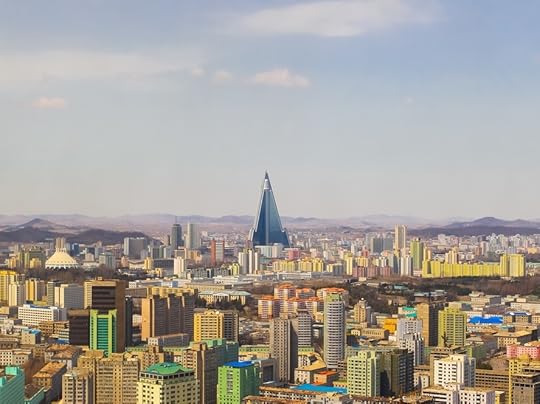 Asia PacificKoreaNorth KoreaKim Jong-un
Asia PacificKoreaNorth KoreaKim Jong-un
May 7, 2015
China Creates Adversaries With South China Sea Reclamations
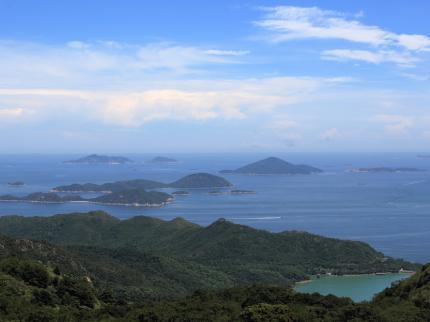
Beijing’s exchange of allegations with Manila over the South China Sea became increasingly nasty this week when the Chinese Foreign Ministry, on May 5th, accused the Philippines of “malicious hyping and provocation.” China accused its island neighbor of illegally seizing its possessions in that body of water. China claims almost all the islands, shoals, rocks, and reefs there as sovereign territory.
Beijing’s undiplomatic language accompanies its contention that the Philippines and other nations had, by building facilities, violated the nonbinding Declaration on the Conduct of Parties in the South China Sea, signed November 2002 by ASEAN states and China.
Although Manila has engaged in some work on features it occupies, it has undertaken nothing nearly as ambitious as Beijing’s recent reclamation program. Beginning sometime in the middle of last year, China, on an accelerated basis, dredged, filled, and cemented over coral in the Spratly Island chain in the South China Sea, adding about four square kilometers of land. Its work continues.
At the end of March, Harry Harris, commander of the US Pacific Fleet, called China’s “unprecedented land reclamation” the “great wall of sand.” “The speed, scale, intensity, and remoteness of China’s ongoing manufacture of land and infrastructure within the South China Sea have few or no parallels in history outside of wartime,” notes Victor Robert Lee, a reporter. The BBC called it “China’s Island Factory.”
Many analysts think China will use the new land for military purposes. Specifically, there are worries the new facilities will support the enforcement of a South China Sea air-defense identification zone, which would complement the one it imposed over the East China Sea in November 2013.
Whether or not China goes ahead with a new air zone, its reclamation alarms many of its neighbors to its south and east. China’s claim to the Spratlys, which it calls the Nansha chain, is disputed by Taiwan and ASEAN members Brunei, Vietnam, Philippines, and Malaysia.
The 10 members of ASEAN, at their Kuala Lumpur meeting late last month, were not able to come up with a firm response to Beijing on the reclamation work, largely because the organization has split into a northern tier, in Beijing’s camp, and a southern group, which feels threatened by China’s aggressive actions. Chalk up the weak ASEAN response as a win for Beijing.
China, despite its successful effort to block ASEAN at its summit, could not let the matter rest. “The Chinese side is firmly opposed to a few countries’ oblique charges against China as well as the pursuit of their private ends at the expense of the overall China-ASEAN relations,” said Foreign Ministry spokesman Hong Lei, at the time of the Kuala Lumpur meeting last month.
Hong’s sour comments were specifically directed not only against attempts to get ASEAN to condemn China’s island-building but also in response to longtime foe Benigno Aquino. The Philippine president said Beijing’s reclamations “pose a threat to the freedom of global commerce and navigation.”
The global champion of freedom of navigation, the US, has done less than many expected, and the lack of a response has apparently encouraged China to proceed. Yet America is not the only large nation with a stake. One ASEAN state, Singapore, is now publicly calling on New Delhi to take a more active role in the region.
Indian Prime Minister Narendra Modi did not have to be asked. This year, New Delhi has quietly made comments apparently directed against China’s reclamation activities. And recently, the Modi government has publicly issued three joint statements on freedom of navigation, one in connection with the prime minister’s October meeting with his Vietnamese counterpart, Nguyen Tan Dung, and the other two with President Obama, one in September and the other in January.
In 2006, Taro Aso, when he was Japan’s foreign minister, proposed an “arc of freedom and prosperity” for Asia. The concept was soon forgotten as regional diplomats thought they could maintain cooperative relations with China.
Now, countries are less optimistic. And as questions about China turn into doubts that have become fears, some in East Asia are looking to India, which anchors the southern end of Aso’s arc.
China’s aggressive moves in the South China Sea are pushing countries in the region to seek support from each other. Those waters just may be where East Asia, along with great powers, determines its future.
OG Image: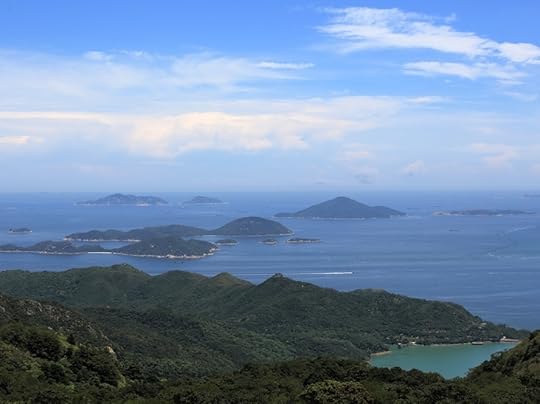 Asia PacificChinaPhilippinesSouth China Sea
Asia PacificChinaPhilippinesSouth China Sea
April 29, 2015
China Goes After ‘Economic Fugitives' in America
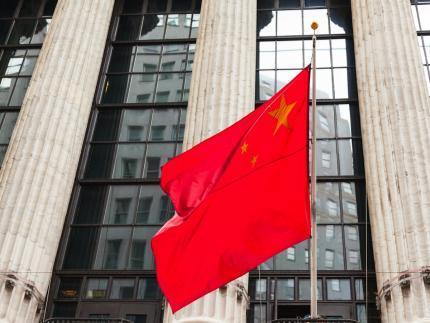
On April 22nd, Xinhua News Agency reported that China’s Central Commission for Discipline Inspection released a wanted list of 100 individuals—77 men and 23 women—accused of corruption. Beijing is trying to get foreign governments to cooperate with its efforts to apprehend the suspects.
Of the 100 listed, 40 are believed to be in the US, and Beijing also maintains that in total there are more than 150 “economic fugitives” now in America.
Chinese law enforcement officials have had some success in obtaining American assistance. Washington’s collaboration, however, raises fundamental issues for any free society.
Xinhua this month stated that after talks between Chinese and US officials, including Secretary of Homeland Security Jeh Johnson, Washington promised to help repatriate Chinese nationals. Whether the Obama administration did so or not, there will be a meeting between the two sides in August. Wang Qishan, who as head of the CCDI is in charge of the effort, is expected to arrive in the American capital for talks on the subject, probably before Chinese President Xi Jinping arrives in September.
The US State Department last month acknowledged receiving China’s list of “priority cases.” At least one prosecution has resulted from Beijing’s campaign, labeled “Operation Fox Hunt.” In March, a federal grand jury indicted Zhao Shilan and her ex-husband, Qiao Jianjun, on money laundering and visa fraud charges. The Department of Justice said it had received assistance from China’s Supreme People’s Procuratorate and the Ministry of Public Security.
Ronald Cheng, a US federal prosecutor in Los Angeles, announced that Zhao may be deported to get around the lack of an extradition treaty with China.
“A ‘sky net’ is being woven,” said a statement issued by the CCDI, a Communist Party organ. “We will cooperate with other countries and mobilize our resources to make these fugitives unwelcome guests and bring them back to justice.”
There is little justice in China’s criminal justice system, and there is even less in the CCDI’s notorious shuanggui internal investigatory mechanism, where there are no safeguards and allegations of torture are widespread.It is inappropriate, on general principles, for any democracy to cooperate with this lawless party—technically, nongovernmental—organ.
And helping Chinese officials fox hunt is even more problematic. Xi, the Chinese leader and party boss, has been conducting what he calls an “anticorruption” campaign, but that is certainly a misnomer. During his effort, started soon after he became the party’s general secretary in November 2012, there have been no known prosecutions of his family members, who have amassed substantial wealth in recent years, or of his political supporters. Worse, there has been, during this time, a relentless jailing of anticorruption activists and Xi’s known political adversaries. In other words, the effort looks like a political purge.
Of course, the US does not want to make itself a haven for criminals. Nonetheless, cooperation with Chinese authorities in their Fox Hunt and related Sky Net initiatives offends important American values. The US should never help any state subject individuals to certain persecution—and possible torture—in an inherently corrupt judicial system.
Moreover, on a practical level, why should the US support one corrupt faction’s efforts against another in China? And given Xi’s deeply held anti-American views, as can be seen by his actions since taking power, Washington has nothing to gain by helping him consolidate his position so that he can focus more time opposing the US in the future.
OG Image: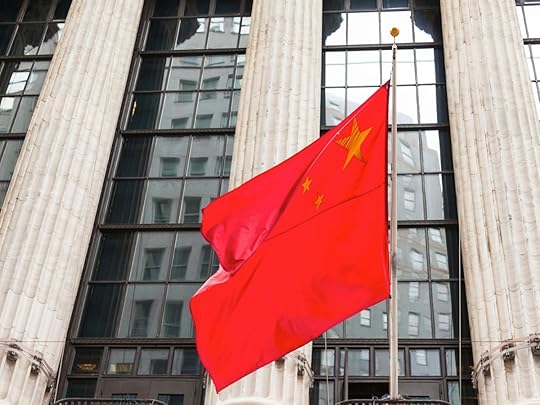 Asia PacificNorth AmericaChinaUnited StatesXi JinpingRising ChinaAnti-corruption
Asia PacificNorth AmericaChinaUnited StatesXi JinpingRising ChinaAnti-corruption
April 24, 2015
North Korea Looks for a New Friend, India
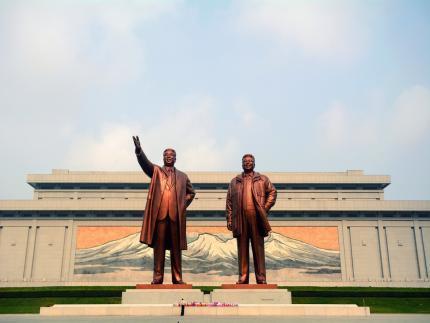
On April 13th, Ri Su Yong met his Indian counterpart, External Affairs Minister Sushma Swaraj, in New Delhi. The trip is thought to be the first time a North Korean foreign minister has visited India.
Ri’s mission highlights North Korea’s attempt to isolate China, its only formal military ally, and establish new relationships in Asia and elsewhere.
Ri last week discussed his country’s nuclear weapon program and asked for additional humanitarian aid. Yet the topics of conversation were not nearly as important as the fact that the meeting took place at all, not to mention in the Indian capital.
Especially since the December 2013 execution of Jang Song Thaek, the uncle by marriage of leader Kim Jong Un, Pyongyang has continually snubbed Beijing. Jang handled most of North Korea’s diplomatic ties with China, so his removal and the subsequent destruction of his nationwide patronage network caused a rupture that has not yet healed.
Since the near breakdown in diplomatic ties with China, Kim has attempted to build relationships with Russian President Vladimir Putin. Putin, for the most part, has reciprocated the effort, especially with last year’s cancellation of most of the North’s Soviet-era debt. Many expect that Kim’s first foreign trip as leader will occur next month, and that he will go to Moscow.
Yet a Russia in recession—and preoccupied by crises it is causing on its western and southern boundaries—will not be able to provide the support Pyongyang needs in the immediate future. India, on the other hand, now has the world’s fastest-growing major economy and could, if it so chose, keep the North Korean regime afloat.
And New Delhi has a motive to lend a hand. China, which has tried to use Pakistan to destabilize India for decades, is stepping up its support to Islamabad. Chinese leader Xi Jinping arrived in the Pakistani capital on Monday for a two-day visit, cash in hand.
Last year, both countries unveiled the China-Pakistan Economic Corridor, a 2,700-kilometer, $45.6 billion network of transport and communication links bisecting Pakistan. The ambitious projects comprising the corridor look overly ambitious—among other reasons, both ends are troubled by ethnic violence—but Xi’s high-profile visit highlights Beijing’s commitment, financial and otherwise, to the unstable state.
New Delhi policymakers are especially concerned that China will use the corridor’s southern terminus, the port of Gwadar, as a base for its planes and warships, so they are keenly watching Xi’s tour of Pakistan. During his trip, the Chinese leader signed commitments for $28 billion of projects.
Pyongyang may be figuring that India’s assertive prime minister may want a chess piece of his own. Narendra Modi is obviously willing to confront Beijing, even in areas the Chinese consider their own, such as the South China Sea, but it’s unlikely he wants to assume responsibility for a destitute client state that is an international pariah.
India has historically remained non-aligned. That attitude has changed in recent years, especially with its moves to create linkages in the Indian Ocean, exhibited by the formation of the “IO-5” with Sri Lanka, Maldives, Mauritius, and Seychelles. But establishing a grouping of neighbors is a far cry from ganging up on China with the Democratic People’s Republic of Korea.
Nonetheless, Ri’s trip to India comes at a crucial time, a month before Modi’s visits to China and South Korea. Every capital, it seems, is trying to make new friends in Asia these days.
OG Image: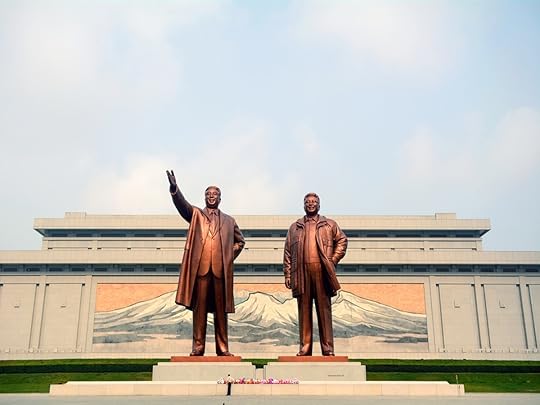 Asia PacificNorth KoreaIndia
Asia PacificNorth KoreaIndia
April 16, 2015
India Goes Shopping for Submarines
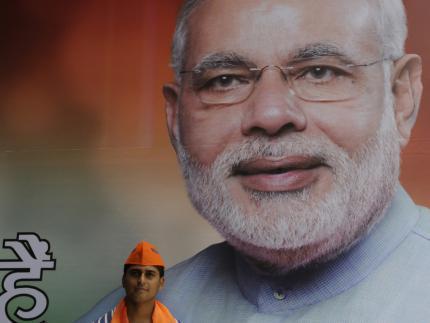
India is in the market for subs, but it’s having trouble buying the best ones. Indian Defense Minister Manohar Parrikar, during a two-day meeting in Tokyo at the end of last month, reportedly asked his counterpart there, Gen Nakatani, to offer to sell six of Japan’s Soryu-class diesel models. The Japanese, according to a source in the Indian Defense Ministry speaking to Defense News, were “non-committal.” The apparent hesitance suggests that New Delhi might want to rethink the application of its “Buy and Make in India” program.
Buy and Make, as a practical matter, requires foreign arms firms, before selling advanced weapons to India, to joint venture with Indian firms. In general, Tokyo does not appear to be dead set against sharing technology or building subs in foreign yards. Japan, after all, will probably be producing Soryus in Australian yards in the near future. India’s facilities, however, are hardly world-class. The “Indian shipbuilding industry has limited capacity and a track record that is less than stellar,” says Alessio Patalano of King’s College London. Moreover, Tokyo is likely concerned about India’s poor track record in working with foreign arms manufacturers.
New Delhi is caught in a dilemma. Like other large emerging nation, India wants to be able to design and build its own armaments. It can develop that capability, but only over the course of decades. At the same time, it feels threatened by China and believes—correctly—it needs sophisticated weapons now.
The Indian political establishment has made the predicament even worse by restricting foreign investment in the defense industry, further retarding progress. The country, to put it mildly, has an unenviable history of developing weapons. Prime Minister Narendra Modi is cautiously relaxing ownership rules but has not gone as far as is needed.
Until it can design and build world-class subs, India will have to depend on others. Soryu-class subs have a short 20-year service life and are not currently configured to carry Indian-made missiles, but they are otherwise ideal for New Delhi’s purposes. The Japanese subs have a longer range and are quieter than the French, German, and Russian models expected to participate in India’s competition.
Some argue the sophisticated Soryus are too advanced for India, but that view is wrong. Indian submariners are, in coming decades, going to be shadowing Chinese subs around the Indian Ocean and perhaps in the seas beyond. China is quickly building a large submarine force—currently bigger than the American one, according to the US Navy—and fast upgrading its technology. India needs the best boats it can acquire.
At present, India has only 14 submarines, and one of them is leased from Russia. In 1986, the country had 21. China now operates more than 70.
Soon after becoming prime minister last May, Modi cancelled a proposal he inherited from the predecessor government to purchase subs made abroad, insisting that the seller produce them under the Buy and Make program. Given India’s urgent needs, the cancellation was probably a mistake, especially in light of the long delays that have already plagued India’s submarine-building programs.
Yet the nationalist leader knows when to bend the rules. Faced with an urgent need to counter the Chinese air force, Modi agreed this month to purchase 36 French-made Rafale fourth-generation fighter aircraft, foregoing Buy and Make requirements for the large order.
If the prime minister can make an exception for out-of-date aircraft, he certainly should do so for state-of-the-art subs.
OG Image: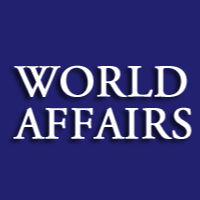 South AsiaIndiaJapan
South AsiaIndiaJapan
April 9, 2015
For China and India, Diplomacy Meets Competition
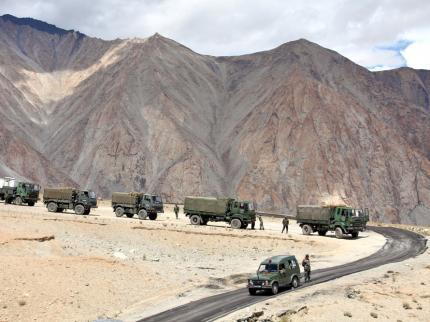
Chinese troops provoked a confrontation with India’s soldiers twice last month in Ladakh, according to reports that surfaced over the weekend. The incursions—elements of China’s People’s Liberation Army advanced south over the Line of Actual Control into Indian-controlled territory—took place in the same area as an incident in April 2013 that roiled relations between the two nations. The line, a little more than 4,000 kilometers long, serves as a de facto border between India and China.
The provocations last month—on March 20th and 28th—were reported to be on the agenda when Indian Defense Secretary R. K. Mathur and his team sat down with Chinese officials in Beijing Wednesday and Thursday for preliminary talks. The discussions took place before their seventh annual dialogue, to be held on Friday.
Despite their severity, the border violations in the Himalayas do not look like they will derail relations between China and India. The two sides, after all, are now in cooperation mode. This week, for instance, they were scheduled to discuss raising the level of their military cooperation, specifically holding joint naval drills, which would complement their annual “Hand in Hand” army exercises.
The defense talks precede Narendra Modi’s visit to China next month, his first trip there as India’s prime minister, and come after another round of border talks, the 18th so far.
Why is India trying so hard to keep tensions down? Modi thinks his country will own the 21st century, so he is waiting China out.
The two countries are typically characterized as “rising powers,” but China is beset by, among other problems, a slowing economy, a degraded environment, and accelerated demographic decline. Furthermore, its political system is beginning to show signs of fracture as Xi breaks party conventions and understandings designed three decades ago to maintain stability.
India, on the other hand, is resurgent, pushed forward by Modi and an increasingly confident political establishment now moving beyond its defeat at the hands of China in the 1962 border war.
There’s a reason for the recent spring in India’s step. In the past, China’s troops were able to move south of the Line of Actual Control for days without challenge by Indian forces. In March, Indian troops quickly met the Chinese soldiers and pushed them back across the line. Modi, since becoming India’s leader last May, has rushed to bulk up his country’s ability to defend its northern territory. Nitin Gokhale, a New Delhi–based journalist and defense analyst, told me that these days the Indian troops along the Line of Actual Control are often better-supplied than the People’s Liberation Army.
As India strengthens its forces in Ladakh, the number of Chinese incursions is bound to fall. That does not mean Beijing will stop testing New Delhi. In all probability, the area of contest will shift south to the Indian Ocean, especially in light of Xi’s “21st Century Maritime Silk Road” initiative, which seeks to connect China’s ports to Africa, the Middle East, and Europe. That goal competes with two Indian initiatives, the “Mausam” project and the “Spice Route of India,” both Indian-centered reconnections of historic sea routes in Asia, Europe, and Africa.
How do these initiatives clash? Both giants are vying to project influence in the Indian Ocean and surrounding areas, with Sri Lanka as the most recent area of competition.
New Delhi was especially concerned by port calls by Chinese war ships there. In September, a Chinese diesel-powered Song-class submarine docked at Colombo, the Sri Lankan capital and port facing India, along with a sub tender, the Changxing Dao, from China’s North Sea Fleet. The Song’s passage through the Indian Ocean was the first known passage by one of China’s conventionally powered subs, and the stopover was the first foreign port call for a diesel Chinese sub. Early the following month, Beijing announced that a Shang-class nuclear-powered attack sub would join anti-piracy patrols off the Yemini port of Aden, an indication that Beijing intended its subs to maintain a continuous presence in the Indian Ocean. Also in October, the Changxing Dao returned to Colombo with a submarine, which may have been the same Song-class boat or, according to some reports, a nuclear-powered one.
In January, Beijing suffered a setback in its goal of using Sri Lankan facilities when pro-China President Mahinda Rajapaksa lost snap elections. The new government has put a Chinese-backed port project on hold.
After the sudden change in government in Colombo, Beijing has shown more sensitivity for New Delhi’s concerns. “China is ready to work with South Asian countries, including India, Sri Lanka, to strengthen policy communication, identify the meeting point of their development strategies, explore effective ways of mutually beneficial cooperation and common benefit of the region, countries and the people,” said Hua Chunying, foreign ministry spokeswoman, responding to a question on India’s Spice Road and Mausam initiatives.
Xi last month proposed a trilateral meeting involving his country, Modi’s, and Sri Lanka.
Two giants are increasingly seeking to exert influence abroad, and, as they do so, are coming into frequent contact. Despite their troubled relations in the past, each is learning to accommodate the other, at least for the time being.
OG Image: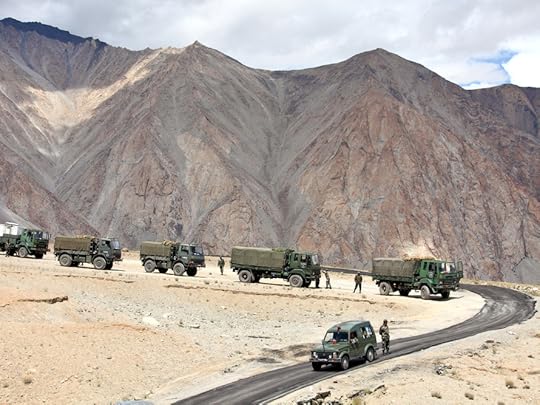 Asia PacificChinaIndia
Asia PacificChinaIndia
April 1, 2015
The Xi Jinping Faction in China

On Friday, the Asahi Shimbun, a Tokyo newspaper, suggested that Chinese ruler Xi Jinping was building a “Zhejiang faction” by promoting longtime acquaintances, some from the Nanjing Military Region of the People’s Liberation Army. Xi served in party posts located in that district.
The report is striking because Xi is at the same time attacking factionalism inside the Communist Party. “Banding together in gangs, forming cliques for private ends, or forming factions is not permitted,” the official Xinhua News Agency stated after a December 29th meeting of the Politburo, the high party organ.
Xi’s attack on factionalism, while attempting to form a faction of his own, is roiling the Communist Party.
Xi Jinping’s attack on factionalism is not the first attempt to eliminate intra-party cleavages. The venerable Alice Miller, writing in the most recent edition of the Hoover Institution’s China Leadership Monitor, notes that after the turbulent Maoist years Deng Xiaoping did away with factional discourse.
Deng started a process of institutionalization of party norms, establishing and enforcing guidelines and rules to ensure stability. By the time of Hu Jintao’s rule, many declared this process successful. For instance, Columbia University’s Andrew Nathan, no friend of the regime, continually spoke of its “resilience.”
But Deng, for all his efforts, did not eliminate either factions or intra-party struggle. Groups continued to form, operate, fight each other, and break apart. He only muted contention, and that had the effect of pushing disagreement out of sight, at least some of the time.
As a result, factionalism became harder to follow than before. And in the party now there is an even more complex shifting of alliances, where personal allegiance, financial interest, ideology, and circumstance come together. All these factors influence behavior in an organizational setting that often changes in ways difficult to predict or even spot after the fact. The “political ecology,” as Miller terms it, is particularly opaque.
It is in this context that Xi succeeded Hu in 2012, in an apparently “smooth” transition. His elevation was all the more remarkable because he became China’s supreme leader without the support of any faction he could call his own. Having no faction was a path to the apex of political power—he was the least unacceptable choice to all the factions—but it was no way to rule a system riven with constantly changing circles, cliques, and gangs. So in an apparent effort to hinder his adversaries, Xi initiated an assault on the legitimacy of their factions. In reality, Xinhua’s statement after the December 29th Politburo meeting was an attack on everyone else’s group.
But in the process of launching such a broad-based initiative, Xi has put cadres on edge. As a famed China watcher told me in private recently, Xi has managed to unite against him longtime rivals, his two immediate predecessors. Jiang Zemin, with his Shanghai Gang, and Hu, with his Communist Youth League, are now working with common purpose.
So the factions that are not supposed to exist are preparing to engage in intra-party struggle against the organization’s leader. And apparently Xi is in some fashion trying to build his own base. Many say he heads the “Princeling faction.” Princelings are the offspring of former leaders and current high officials, and these individuals have diverse views spanning the political spectrum. They do not form a coherent grouping.
Because the Princelings are not a faction—even in the loosest sense of the word—Xi is building his own core of political support with promotions, demotions, and a nationwide purge. Therefore, observers are beginning to talk about a “Zhejiang faction,” a reference to his prior posting to that province.
Willy Lam of the Chinese University of Hong Kong points out that China’s liberals call Xi “the Mao Zedong of the 21st century.”Xi, who speaks in Maoist tones much of the time, may take that as a compliment, but many shudder. Mao, after all, magnified a factional struggle into the Cultural Revolution.
OG Image: Asia PacificChinaXi JinpingFactional Politics
Asia PacificChinaXi JinpingFactional Politics
March 27, 2015
China’s Never-Ending ‘War on Pollution’
There is now a sense that Chinese leaders are starting to take the environment seriously. Premier Li Keqiang, for instance, at the National People’s Congress this month said he was reaffirming his March 2014 “declaration of war” against pollution.
Liu Yuanju, a researcher at the Shanghai Institute of Finance and Law, points out that the leaders are now determined to do something about the environment. “A big difference in this year’s government work report is that the targets for energy conservation and emission reduction are put together with all the major targets of economic and social development,” he notes.
That looks like a good sign, and so does China’s promise to cap carbon emissions by 2030, made to President Obama last November.
There is also tangible progress, namely, the 2 percent fall in the country’s carbon dioxide emissions in 2014. Bloomberg News said this week that the drop signaled that “efforts to control pollution are gaining traction.”
Nonetheless, there are reasons to believe that, despite the best of intentions of its leaders, China will not make substantial progress anytime soon. First, the decline in emissions last year is more a reflection of the severe deterioration of the economy than a result of conscious policy. Heavy manufacturing, the major source of carbon emissions, is on the rocks, a change Beijing is trying to reverse.
The downturn in growth complicates efforts to achieve ambitious environmental goals. For one thing, the Communist Party has always believed that economic development is more important than clean air, pure water, and uncontaminated soil, and in any event its officials apparently fear out-of-work citizens more than those irritated by a degraded environment. Senior leaders believe they can, through the right mix of persuasion and coercion, control public discontent over the issue.
Their confidence was evident the first week of this month when they first restricted and then completely censored Under the Dome, a 104-minute environmental documentary made by television celebrity Chai Jing. The film, often compared to An Inconvenient Truth, appeared online on February 28th and received more than 200 million hits. By March 6th, however, it was completely scrubbed from Chinese sites.
Under the Dome was obviously made with support of some party officials, but it is also clear that its sudden popularity troubled senior leaders. Not only did they override subordinates and take down the film, they then began arresting pollution activists across China. It’s now apparent that if there is going to be a war on pollution, as Premier Li has promised, only top figures will be allowed to wage it.
“Forty years ago, Los Angeles was the same as us,” Jack Ma, the leading light behind Internet giant Alibaba, said in 2013. “If they can fix it, why can’t we?”
Chai in fact traveled to that city to find out how officials there fought smog, but she didn’t actually have to fly across the Pacific to get the answer. She knew it already. “The strongest governments on earth cannot clean up pollution by themselves,” Chai says in her documentary. “They must rely on each ordinary person, like you and me, on our choices, and on our will.”
In LA, officials were pushed hard by an angry, impatient, and demanding citizenry. That also describes ordinary Chinese folk, but in southern California there was one critical difference: the residents there could vote.OG Image:
 Asia PacificChina
Asia PacificChina
March 20, 2015
China's Infrastructure Bank Proposal Gains Traction

On Tuesday, France, Germany, and Italy announced they will participate in the Beijing-led Asian Infrastructure Investment Bank. The trio follows Britain’s decision to do so and precedes expected announcements by Australia and South Korea.
Washington had counseled caution about joining AIIB and is not expected to sign on. The rush of American friends and allies to become founding members was portrayed as a “debacle” for the US by Financial Times columnist Gideon Rachman and a “humiliation” of Washington by the South China Morning Post.The US, Rachman noted, now looks “isolated and petulant.”
At first glance, the American objection to the AIIB appears rooted in a selfish desire to protect the Washington-based World Bank and the Manila-based Asian Development Bank, in the Philippines. This perception is reinforced by the argument that there is a need for a cashed-up organization in a region begging for a trillion dollars of roads, railroads, and fiber-optic cable. Moreover, the existing multilateral institution in the vicinity, the oft-criticized Asian Development Bank, is thought to be more interested in poverty-alleviation projects than economy-enhancing infrastructure.
Is America jealous? Perhaps, but as Washington has been quietly noting, the AIIB, at least as presently envisioned by Beijing, is not the answer for the needs that exist. The Chinese, for instance, want to front 49 percent of the bank’s capital so that they will, as a practical matter, have a veto.
Such a large shareholding would be unusual for a multilateral institution. By way of contrast, the American interest in the World Bank is only 16.1 percent. The US share of the Asian Development Bank is 15.6 percent.
Why would China want almost half of the AIIB’s voting power? There are many possible reasons, but two of them raise special concerns. The first is that Beijing is plotting to grab control of collective funds to make loans that are not commercial in nature and therefore may be imprudent. The suspicion is that the AIIB will back projects that will be built by Chinese workers employed by Chinese construction firms, and that the new infrastructure will be used to facilitate the export of Chinese goods that the ailing Chinese economy cannot absorb.
Second, there is a concern that, in Rachman’s words, the AIIB could become “an instrument of Chinese foreign policy if Beijing ends up having veto power over the bank’s decisions.”Washington is not the only capital thinking along these lines. Julie Bishop, Australia’s foreign minister, is also worried about Beijing’s proposed shareholding.
China, to its credit, has promised the new bank will be “open, inclusive, transparent, and responsible,”but the test of its intentions will be its willingness to accept a vastly reduced role in the bank, thereby ensuring that it cannot on its own make irregular lending and other decisions.
Potential AIIB members will begin meeting in Almaty, in Kazakhstan, on March 29th to draw up the terms of their participation. By March 31st, the last scheduled day of the gathering, the initial shareholding should be set. Everyone will be looking to see what percentage Beijing decides it should have.
OG Image: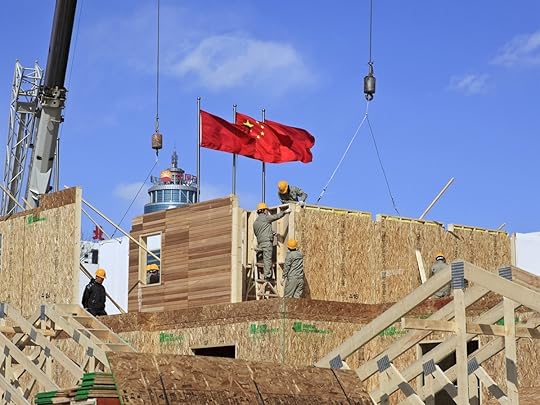 Asia PacificChinaRising China
Asia PacificChinaRising China
Gordon G. Chang's Blog
- Gordon G. Chang's profile
- 52 followers



